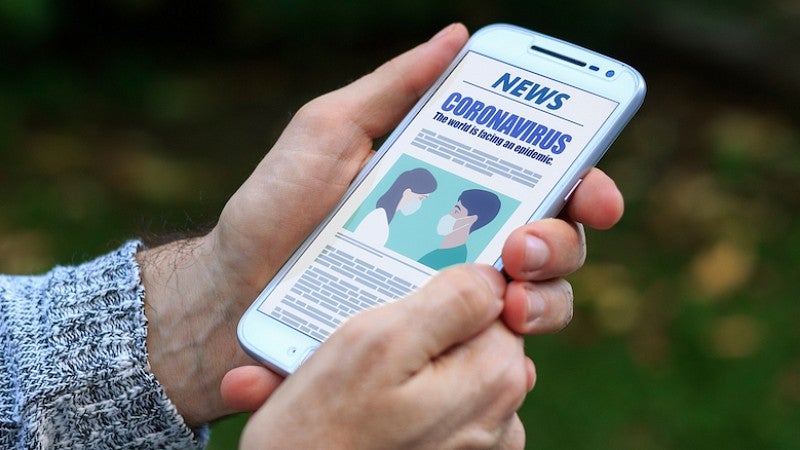
By Kristin Kessler
Two months ago, before the coronavirus was commonly known, American media covered COVID-19 as a threat abroad. It spread around the world, and New York City became the epicenter of the pandemic.
The development of mainstream America’s understanding of the virus had a lot of...challenges. Delayed responses, xenophobic messaging and widespread misinformation made it difficult for most people to address the reality of being in the middle of a global issue with no end in sight.
As the pandemic progresses, we realize there is more we don’t know about the virus than we do. The questions people ask in hopes of reassurance — how long will this last, what are we going to do, am I safe — either have complicated answers or no answer at all.
Journalists are under a lot of pressure to fill gaps in the public’s knowledge of the issue, but that is a more challenging task than imagined. COVID-19 research develops quickly, and journalists must translate medical jargon into accessible information as well as review updates from elected officials for political posturing. How can journalists cover the coronavirus, while prioritizing accuracy and timeliness, without spreading misinformation or creating a panic?
The scramble to understand COVID-19 and its implications put experts from various fields in high demand. Ellen Peters, the Philip H. Knight Chair Director of the Center for Science Communication Research, is one of them. Peters is an expert in decision making and the science of science communication. She got an early jump on studying the unfolding mass communication surrounding the coronavirus outbreak.
Peters knew trust would be a critical factor in the way people accepted information, so she and a team of researchers created a survey to identify who people trusted the most from various groups and whether these groups were liberal or conservative.
The team found between President Trump, the Center for Disease Control and Prevention, and health care providers — the public trusts the CDC and doctors more, regardless of political leaning. This information is valuable because, “people follow recommendations more when they come from a trusted person or group,” Peters said.
Journalists and other mass communicators can take this as advice to cite non-partisan experts as sources when discussing how the public can stay safe and reduce the spread of the virus.
Another aspect of her research is “statistics stalking,” or looking at the impact of obsessing over updates about the coronavirus. Another of her surveys found that inundating yourself with statistics can lead to distortion of information and needless worry. In this instance, data is not a reliable form of solace.
This begs journalists to ask, could fear-based responses — hoarding and xenophobia — be avoided if the outbreak was covered differently?
These days, reading just one news story can be panic-inducing. The COVID-19 has turned a lot of journalists into rookie science communicators, and these issues require a nuanced kind of coverage to benefit the public. Luckily — kind of — there are journalists with expertise on these topics.
Caroline Chen, an investigative reporter for ProPublica, offers advice per her experiences. She usually covers healthcare, but her time living in Hong Kong during the SARS outbreak and later covering both the Ebola and Zika viruses for Bloomberg News got her a spot on ProPublica’s coronavirus reporting team.
Chen has some recommendations, including tips on how to ask the right questions and make statistics valuable to your audience, for writing informative articles without causing undue stress. Although ProPublica published her article on March 5, most of the information and all of the tactical advice are still relevant.
She notes gaps in the public’s understanding of health crises emerge when they receive inconsistent messaging from three groups: hyper-detailed information from experts, over-simplified headlines from the media and hand-picked statistics from government officials.
Her advice originates from her perspective as an accountability journalist, which is a helpful paradigm during a time where discerning questions are necessary to cut through the medical and political positions that relevant officials have.
Hopefully, employing these kinds of practices while reporting will make it possible even for statistic stalkers to feel prepared instead of panicked. Chen’s advice for benefiting your community beyond responsible reporting is to bridge the space social distances between us with compassion.
You can keep up with Peter’s and the rest of the SCR’s on-going studies on their website. Chen is currently covering COVID-19 for ProPublica.
Kristin Kessler is a senior majoring in journalism and minoring in environmental studies. She is a writing coach for the SOJC’s Writing Central and an intern at the SOJC’s Communication Office.
